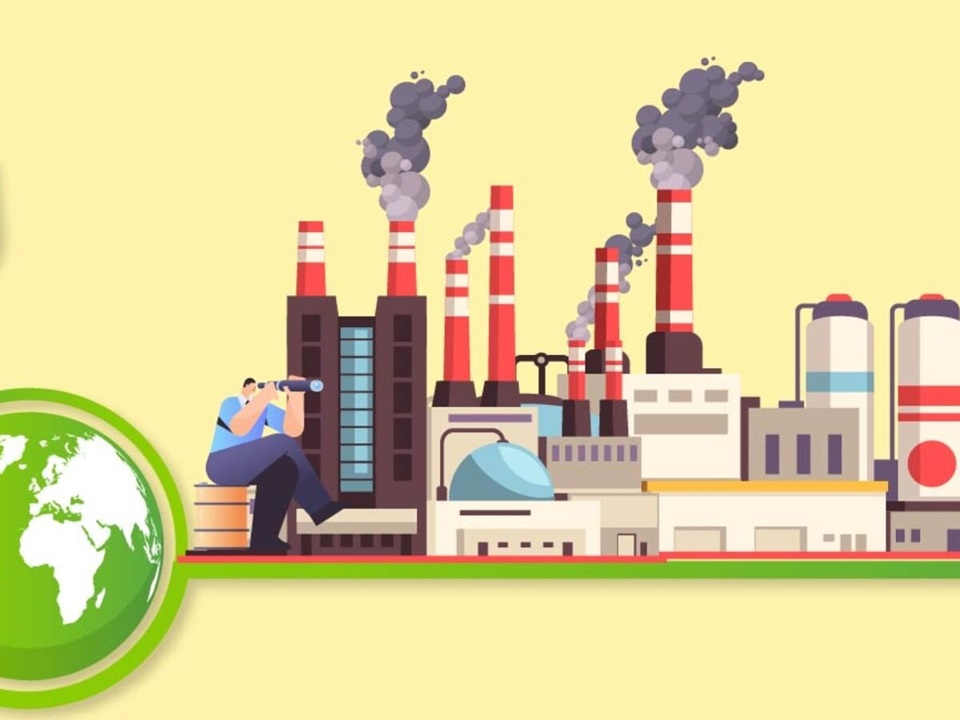As various industries across the globe intensify their efforts to combat climate change, some industries are under increasing pressure when it comes to transitioning towards sustainability-oriented low-carbon practices. One such industry is the steel industry.
While the steel industry is known for its heavy carbon footprint, it aspires to become a focal point for decarbonisation initiatives. In order to work in this context, Indian steelmakers have undertaken key initiatives to lower their environmental impact to pave the way for a more sustainable steel industry. In this article, let’s explore some of the key initiatives by top Indian steel producers as well as stainless steel producers towards decarbonising the steel industry.
1. Tata Steel: The company has been showcasing its monumental commitment towards a highly sustainable future such as:
· Net-Neutral Goal: It has set an applaud-worthy target for achieving net-neutral carbon emissions by the year 2045.
· LeadIT Partnership: In July 2023, it joined hands with LeadIT (Leadership Group for Industry Transition), an initiative supported by the Sweden government, the Indian government, and the World Economic Forum. This collaboration marks the company as the first ever steel company in India to join the group and cement its position as a global leader in advocating net-zero industry transformation.
· Hydrogen Gas Trial Injection: Actively, it has been integrating innovative carbon-negative technologies into its operations. To pursue decarbonisation the following approaches have been formulated:
1. Capturing CO2
2. Carbon direct avoidance
The gas trial injection comes under the second (CDA) approach. It caters to the blast furnace which is one of the biggest industrial contributors to worldwide CO2 emissions. At Jamshedpur Works, the company started the trial H2 gas injection using 40% of injections in E Blast Furnace and has become the first ever company to use H2 gas injected in a blast furnace in such a large quantity.
By doing this, the company can reduce the coke usage volume by 10%. This, in turn, can cause around 7% to 10% CO2 emissions reduction. It would be interesting to see if this exercise will have any impact on their stainless steel price and other product prices or not.
2. JSW Steel: World Steel Association has complemented the company’s commitment to climate action such as:
· Climate Change Risk Analysis: Upon long-term climate risk assessment through detailed scenarios, the company focuses on transitional as well as physical risks, with a special focus on examining climate-related impacts such as rainfall variability, temperature shifts, sea-level changes and water stress.
· Climate Action Group: To plan and execute climate change mitigation strategies for ensuring that JSW follows global best practices, the company has set up a multi-disciplinary team.
· Internal Carbon Pricing: Internally, it has implemented a carbon price i.e. USD 20/tonne as an additional measure to keep a tab on carbon emissions internally.
· Stakeholder Engagement and Advocacy: The company collaborates with stakeholders at different levels actively. Its lobbying efforts under the supervision of the Board and the Sustainability Committee, advocate for climate-based policies and regulations under the Paris Agreement.
· CDP Disclosure: When it comes to climate actions consistently, it has been transparent. An A rating from CDP highlights its commitment to climate change mitigation best practices.
3. ArcelorMittal Nippon Steel India: In the global steel industry, the company is the epitome of taking the potential and pivoting towards a sustainable future. Being a decarbonisation frontrunner, the company is getting closer to a greener future in the following ways:
· Decarbonisation Projects Investments: As an extension of its parent company- ArcelorMittal, AMNS India takes pride in being an active contributor to the global decarbonising effort. The company has made an investment of over $122 million in an array of decarbonisation projects.
Not just that, its focus is above and beyond just internal projects. By leveraging ArcelorMittal’s global presence, the company has forged partnerships with firms like Heliogen, H2Pro, LanzaTech, NerraPower and From Energy.
· Collaboration With Greenko Group: The company has partnered with a pioneer in the renewable energy sector- Greenko Group. With an investment of a whopping $600 million, the collaboration aims to set up green energy generation facilities in Andhra Pradesh. This move not only strengthens AMNS’s position in the green energy landscape but also underscores its determination to reduce its carbon footprint.
4. Other Players: More than 50% of key players in the stainless steel industry as well steel industry have started monitoring Scope 1 and Scope 2 emissions. Those who haven’t are chalking out plans to kickstart the monitoring process in some capacity or the other. It is applause-worthy to note that some other companies have started tracking Scope 3 emissions. Broadly, their decarbonisation strategy revolves around three major factors:
·Firstly, investing extensively to make low-emission steel.
·Secondly, conducting studies for the assessment of cost-benefit trade-offs. It’s because the majority of Indian steel manufacturers are game for decarbonisation strategy, but the high incurring cost seems off-putting for them.
·Thirdly, increasing the use of steel scrap for making steel.
Over To You
The initiatives by Indian steel producers to decarbonise the steel industry reflect a concerted effort to fulfil global sustainability goals. By embracing cleaner technologies, prioritising energy efficiency, and championing a circular economy, these initiatives seem to be moving in the right direction. As the steel industry plays a pivotal role in the global transition to a low-carbon economy, these actions won’t only contribute to mitigating the risk of climate change but will also position the country as a forward-thinking player in the global landscape.



